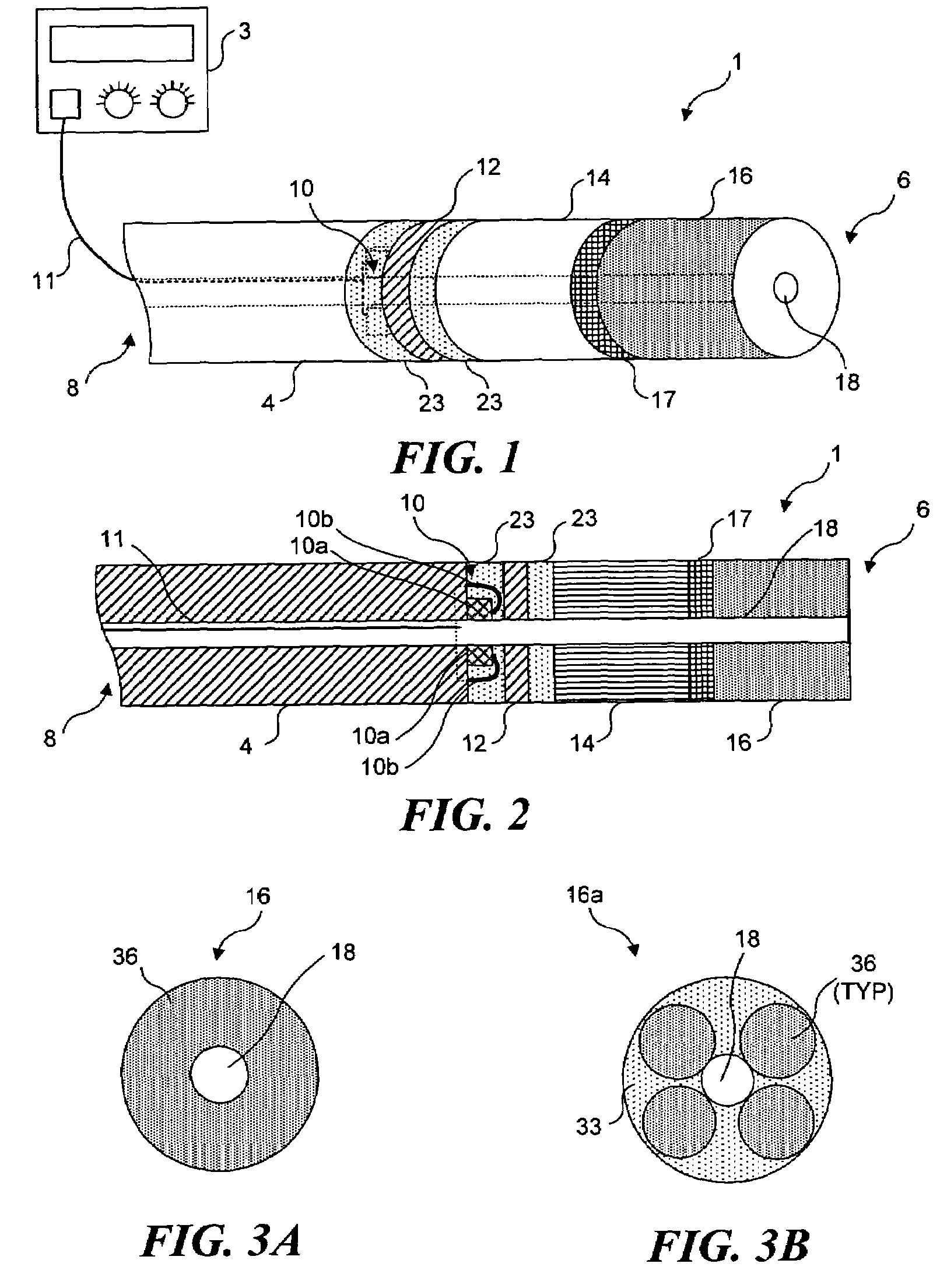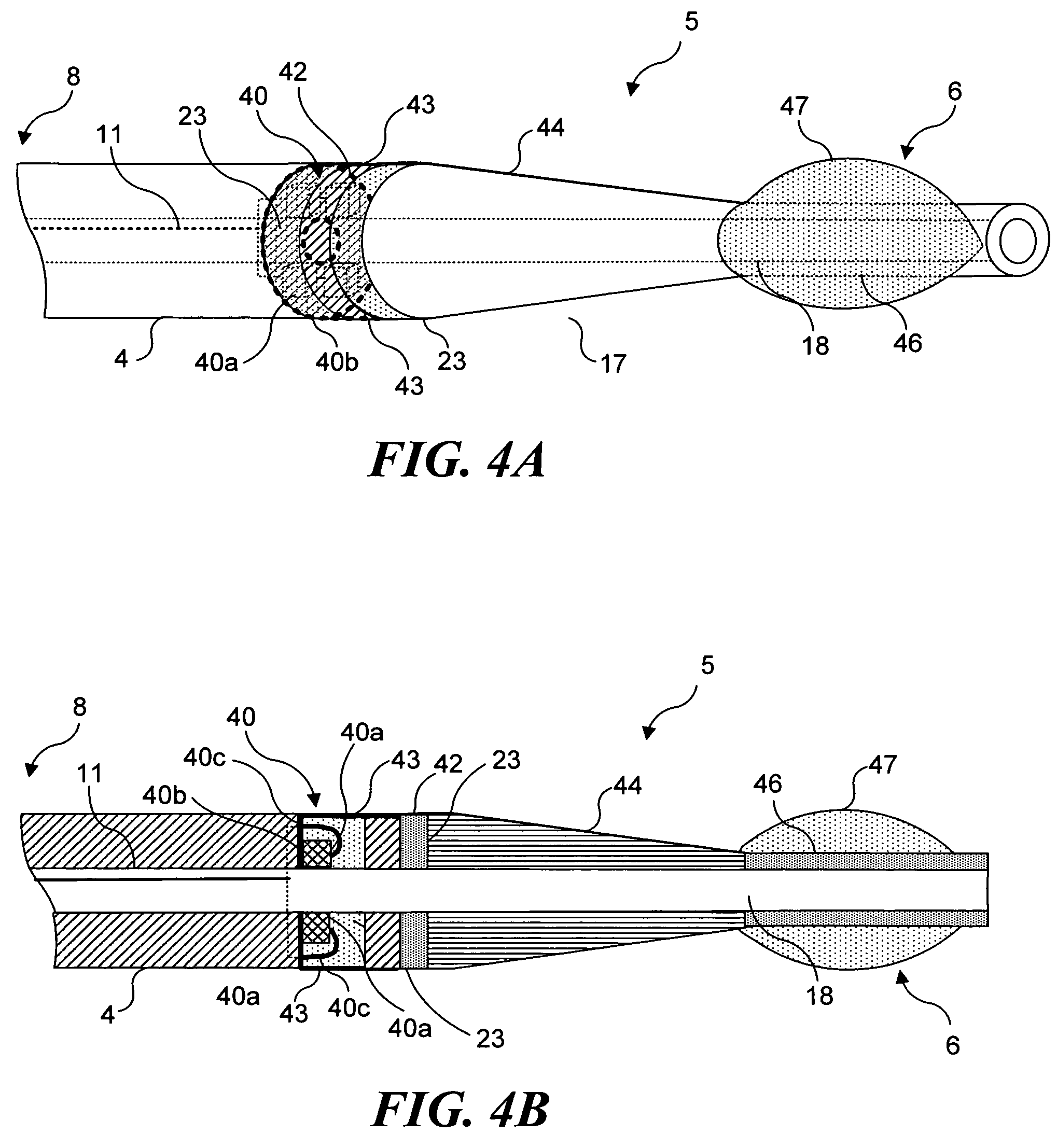Light generating device to intravascular use
a light generating device and intravascular technology, applied in the field of using light to diagnose and treat tissue, to achieve the effect of relatively rapid uptake of photoreactive agents into target tissues
- Summary
- Abstract
- Description
- Claims
- Application Information
AI Technical Summary
Benefits of technology
Problems solved by technology
Method used
Image
Examples
Embodiment Construction
[0045]Unless otherwise defined, it should be understood that each technical and scientific term used herein and in the claims that follow is intended to be interpreted in a manner consistent with the meaning of that term as it would be understood by one of skill in the art to which this invention belongs. The drawings and disclosure of all patents and publications referred to herein are hereby specifically incorporated herein by reference. In the event that more than one definition is provided herein, the explicitly defined definition controls.
[0046]Referring to FIG. 1, a light-generating apparatus 1, having a distal end 6 and a proximal end 8, is embodied in a catheter having an elongate, flexible body 4 formed from a suitable biocompatible material, such as a polymer or metal. Catheter body 4 includes at least one lumen 18. While lumen 18 is shown as centrally disposed within catheter body 4, it should be understood that lumen 18 can be disposed in other positions, and that other ...
PUM
 Login to View More
Login to View More Abstract
Description
Claims
Application Information
 Login to View More
Login to View More - R&D
- Intellectual Property
- Life Sciences
- Materials
- Tech Scout
- Unparalleled Data Quality
- Higher Quality Content
- 60% Fewer Hallucinations
Browse by: Latest US Patents, China's latest patents, Technical Efficacy Thesaurus, Application Domain, Technology Topic, Popular Technical Reports.
© 2025 PatSnap. All rights reserved.Legal|Privacy policy|Modern Slavery Act Transparency Statement|Sitemap|About US| Contact US: help@patsnap.com



